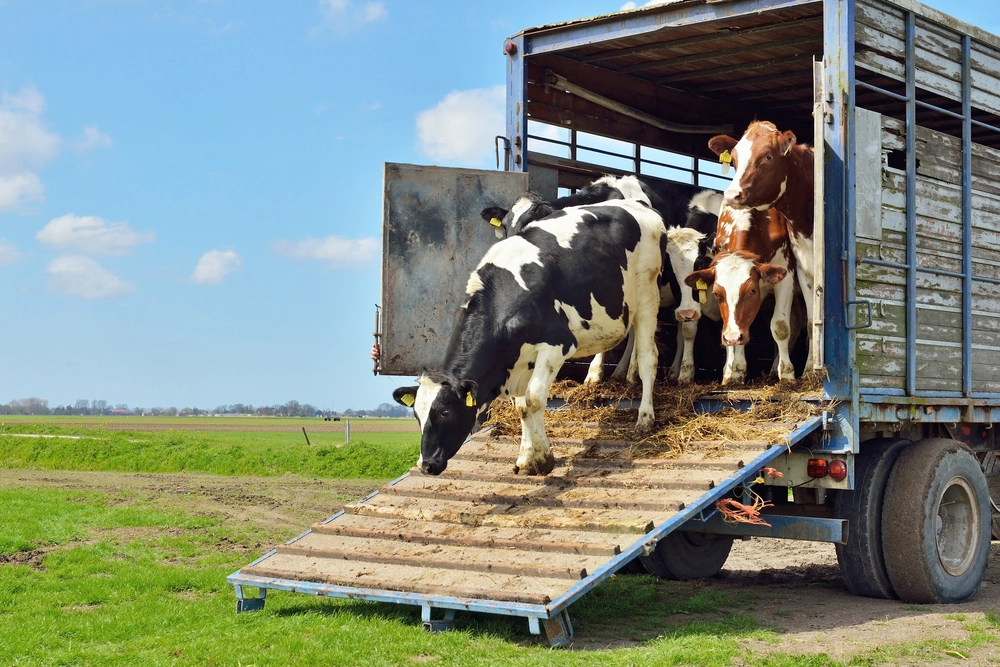Extreme weather conditions are happening more regularly and becoming more intense. Knowing what to do and practicing your emergency plan can make all the difference for both you and your livestock.

When disaster strikes, be it a fire or flood, blizzard or hurricane, the best thing you can be is prepared. But in the heat of the moment, it’s hard to remember what to do and how to ensure the safety of yourself and your animals.
That’s why Ragan Adams, the veterinary specialist for the Colorado State University extension, recommends thinking through possible emergency scenarios before they occur, so you can have a full picture of what you might need. Different operations will have different priorities, and living on a flood plain versus a fault line will change your preparations accordingly.
“If you have a dairy farm, there’s not many places you’re gonna move 1,000 cows and be able to milk them the next day,” says Adams. “So, people tend to put their emphasis on being able to shelter in place, be independent. In the beef industry, if you’ve got a cow-calf operation, oftentimes your benefit is land, so you move them to other pastures. Or in a hurry, if it comes up fast on you, you would cut fences and open gates and let them run for it.”
While there are different strategies for individual operations, there are some principles to keep in mind when devising an emergency plan.
Make a plan and practice it
It’s not enough to come up with an escape route or a plan in the abstract; you have to put it to the test. That means in the case of an evacuation, does your family know how to safely get off of the property and what to bring with them? There are resources, such as this Red Cross worksheet, that can help you work through every step of an evacuation. The Extension Disaster Education Network (EDEN) has resources for most every emergency you can encounter, from Tsunamis to swine fever.
On a farm, think about everyone that might be on site. If you have employees or seasonal staff, emergency training with clear instructions is a must. Everyone should be aware of what to do in the event of an emergency and where to safely meet up afterwards. For a large staff, it’s a good idea to designate a team captain or leader who can be briefed on specific instructions and shepard folks along.
And don’t forget about your animals. Get them used to being loaded into trailers, carriers or whatever mechanism you use to transport them. If you have the option to let them out to a further pasture, practice running out to the fencing or guardrails to ensure the livestock can safely move where they need to go. “If you have a trailer, but you haven’t put your horse in it in three years, when there’s all this excitement and everybody’s worried, those animals can get very worried. So, it’s important for their owners to practice getting them used to it,” says Adams. She recommends running through a drill yearly, to keep everyone up to speed.
Have a buddy
What if you’re out of town when disaster strikes? Or if the emergency is too big to handle alone? Farmers tend to look out for one another, and this is no different. If there are several producers in your area, consider developing a phone tree or other communications plan if there is adverse weather in the forecast.
And, says Adams, include your buddy in your planning session. “I know of a group in Colorado that has annual days in the spring, they’ll get a whole bunch of people together and practice loading their horses, so that everybody gets [comfortable],” says Adams.
Stay in contact
Make sure you have a reliable source of communication that is not a cellphone. Cell towers and service can easily go down in inclement weather, or signals may be jammed. Even landlines aren’t foolproof in certain situations. “The more reliant you are on one source of communication, the more you need backups,” says Adams.
Adams suggests keeping a radio on hand, so you can get alerts and information as needed. She keeps a solar-powered ham radio on her property, which also allows her to radio out in case she needs assistance. Some municipalities or counties also have designated channels or feeds for emergency alerts. You can often sign up for alerts through your local emergency management office or private services like this one. Keep in mind, however, that you don’t want to solely rely on a cellphone or internet services.
Keep your vehicle prepared
The final piece of the escape plan is ensuring that your vehicle is prepped and ready for transportation. That means ensuring that it’s gassed up and roadworthy. It could also mean keeping copies of printed maps handy in the vehicle—if those cell towers are down, GPS signals aren’t going to work well.
Make sure that any attachments to the vehicle, such as trailers or flatbeds, are in good condition and easy to work with. Make sure that all tires are full and patched and that everyone knows how to operate any machinery they may have to work with.
In the event that your area loses power, are you able to manually open fences, garages, gates and locks? Practice using these manual options, and make sure any electrified fences or gates have an override option in the event of power outage. Keep flashlights and other safety equipment in areas with easy access, so if lights go out, you’ll be able to see what you’re doing in the dark.
Thanks for sharing this very well-written and worth-reading article. Wish to see more in the coming days.